
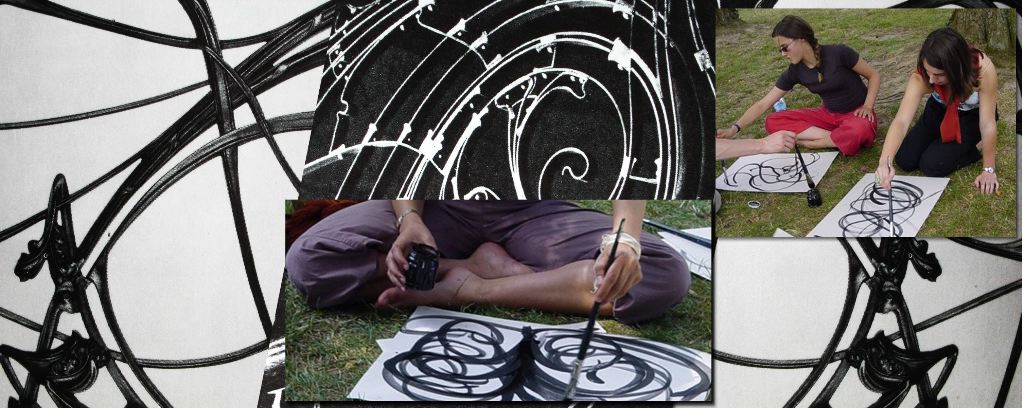
L’Art nouveau is not new anymore.
The new wine arrives every year after the grape harvest, after it is not new anymore, it is wine which will mature every year and will become better. ( to drink with moderation.)
The Art nouveau will be always called like this whereas it has been a long time it is finished; it makes one century that it is finished, hundred years.
Did it become better?
Yourself, you knew the beginning of 21st century in the year 2000. Those which knew the art nouveau lived at the beginning of the previous century, in 1900. (About when the heavy iron Eiffel tower was launched towards the sky).
Thus nobody alive has known the art nouveau at the time it was manufactured.
Fortunately, it remains traces of this time that one calls also Modern Style.
The opposite of “modern”, is old, the opposite of “nouveau”, is ancient, it is similar.
“Modern” it is like “nouveau”. It is neither nouveau nor modern when it is old.
One also says “the Beautiful Time” (La Belle Époque), it is simpler to understand, but perhaps we also live a beautiful time… Then one should perhaps say 1900 style?
Where can one find traces of this Beautiful modern Time 1900 of Art nouveau?
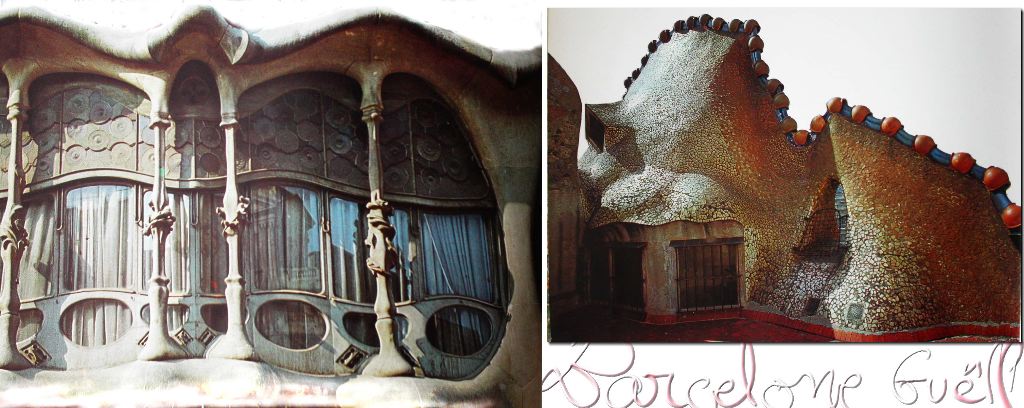 One can find works of this time in certain large cities with the proviso of knowing well what one seeks and looks up.
One can find works of this time in certain large cities with the proviso of knowing well what one seeks and looks up.
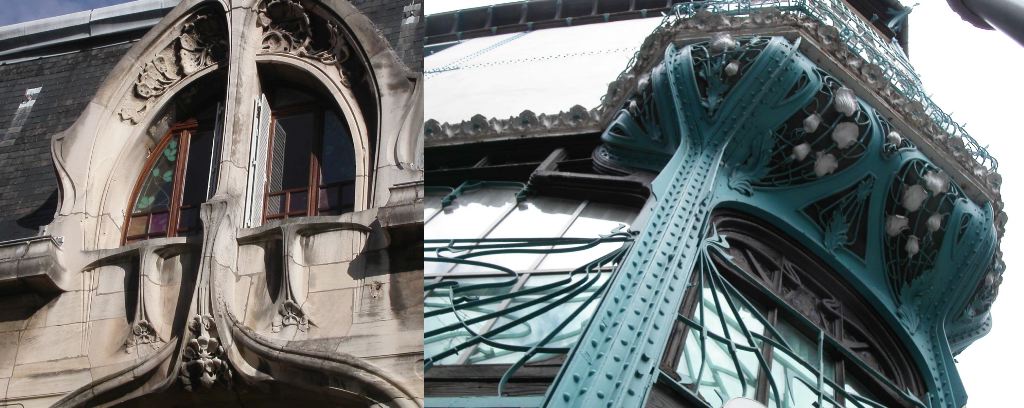 In Nancy, it is rather easy to find splendid decorations of this time right while walking, by looking at the houses and by looking up.
It is necessary all the same to learn how to seek the details and the forms of this time, if not one doesn’t know what to look at.
The Art nouveau likes the curves, so it is rather easy: curves should be sought.
If you find a curve on a frontage, a balcony, a window, or a door, it is probably Art nouveau.
In Nancy, it is rather easy to find splendid decorations of this time right while walking, by looking at the houses and by looking up.
It is necessary all the same to learn how to seek the details and the forms of this time, if not one doesn’t know what to look at.
The Art nouveau likes the curves, so it is rather easy: curves should be sought.
If you find a curve on a frontage, a balcony, a window, or a door, it is probably Art nouveau.
 If you find decorations which seem to melt like chocolate it is a house Art nouveau. , in Nancy, one says “School of Nancy” (École de Nancy).
The odd frontages of houses with curves which one finds in Nancy were drawn and carved by pupils of the school of Nancy, who make Art nouveau, which has more than one century.
The pupils of the school of Nancy who are adults like the sinuous lines of the plants going along the walls. They also like the flowers. The flowers are rarely square, triangular, and their stems are neither right neither parallels nor perpendiculars.
It is very simple, the School of Nancy hates the geometrical forms.
If you find decorations which seem to melt like chocolate it is a house Art nouveau. , in Nancy, one says “School of Nancy” (École de Nancy).
The odd frontages of houses with curves which one finds in Nancy were drawn and carved by pupils of the school of Nancy, who make Art nouveau, which has more than one century.
The pupils of the school of Nancy who are adults like the sinuous lines of the plants going along the walls. They also like the flowers. The flowers are rarely square, triangular, and their stems are neither right neither parallels nor perpendiculars.
It is very simple, the School of Nancy hates the geometrical forms.
They are not alone not to like the straight lines.
(1) Pyramids are triangular, the artists of Nancy did not like simple volumes like these.
(2) The Greek temples, (3) the Roman temples and (4) the churches of the Renaissance do not have curves either; they are right isosceles triangles posed on parallel lines, the columns. That does not resemble a plant at all (mimicked or drawn).
(5) One time ago when one carved curves in the geometrical churches. The triangles were transformed into arcs and they were decorated by spirals which one calls volutes. One called this time “Baroque”,
Cigarette smoke makes splendid buckled drawings which one calls “volutes”. Smoking causes serious diseases
(6) then…, the Rococo ", there were even more details twisted one in another.
 (7) The architects of the Gothic cathedrals liked the simple curves, the arcs of a circle; the arcs of a circle which are cut, parallel arcs of a circle.
The Gothic cathedrals are very old: they are seven centuries, 700 years and they are always upright, they are only stones piled up, and that gives the impression to be lianas, the artists of the Art nouveau loved Gothic artists.
It should be retained that the men who built the houses sometimes liked or hated curved lines.
It is strange, there are times when one likes to live in the curves and other times; not.
(7) The architects of the Gothic cathedrals liked the simple curves, the arcs of a circle; the arcs of a circle which are cut, parallel arcs of a circle.
The Gothic cathedrals are very old: they are seven centuries, 700 years and they are always upright, they are only stones piled up, and that gives the impression to be lianas, the artists of the Art nouveau loved Gothic artists.
It should be retained that the men who built the houses sometimes liked or hated curved lines.
It is strange, there are times when one likes to live in the curves and other times; not.
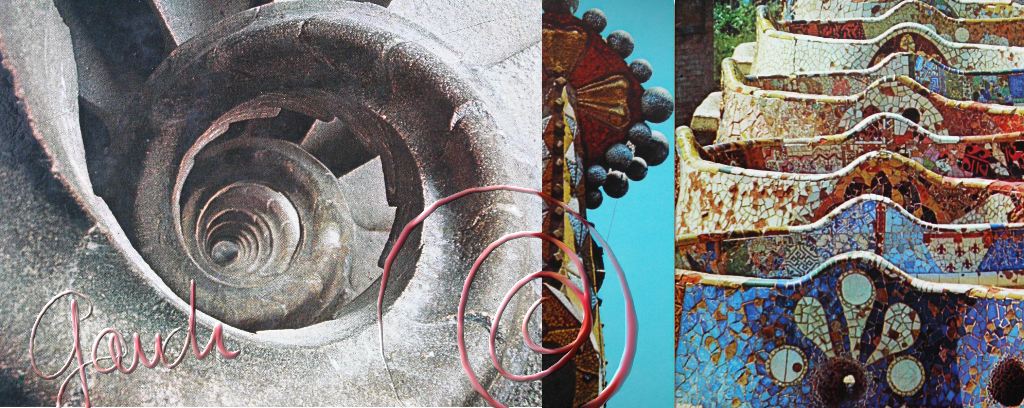 The artists of the art nouveau wrote in their rules:
The artists of the art nouveau wrote in their rules:
“Nature makes very beautiful lines, it will be our single source of inspiration."
Those which built differently at that time were not artists of the Art nouveau. Their rules did not last a long time: twenty years only!
Then, the vertical line and the horizontal one became the queens again until today; I.e. since about ninety years.
Our time is not funny for those who like the funny lines like noodles.
At that time, to make fun of Art nouveau decoration, one called it the “noodle style”. It is better to imagine spaghettis cooked without tomato sauce, but it was not so twisted all the same… Those who do not like always exaggerate.
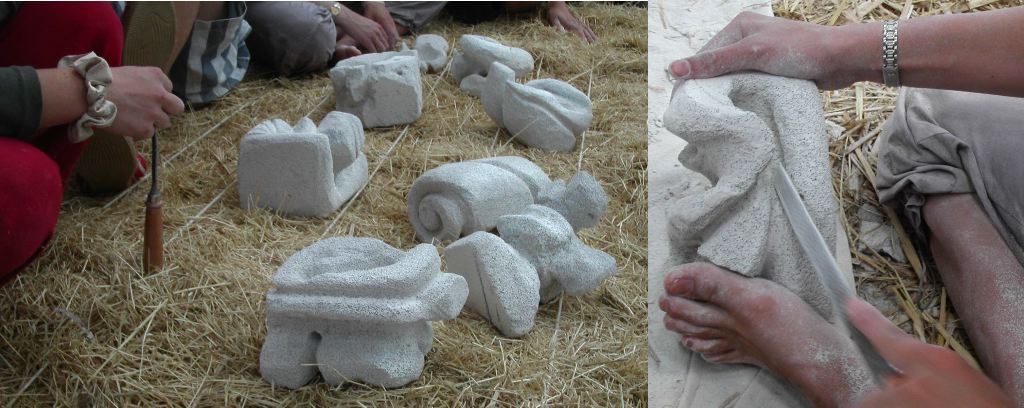 For the workmen, it was not easy to cut the hard stone so that it becomes flexible like a climbing plant.
For the workmen, it was not easy to cut the hard stone so that it becomes flexible like a climbing plant.
 Wood is cut easily, but it was not easy for the carpenters to make windows in the shape of ferns. The window-panes could have the forms and the colors which one liked, they benefited from the molten glass when it was hot and soft a little like tart pastry.
At that time, they had a lot of iron, the proof, the Eiffel tower. Then these artists used it a lot by twisting it in all the directions as beautiful large angelica which one finds in the meadows in spring. The balconies give the impression to be made of liquorice.
Wood is cut easily, but it was not easy for the carpenters to make windows in the shape of ferns. The window-panes could have the forms and the colors which one liked, they benefited from the molten glass when it was hot and soft a little like tart pastry.
At that time, they had a lot of iron, the proof, the Eiffel tower. Then these artists used it a lot by twisting it in all the directions as beautiful large angelica which one finds in the meadows in spring. The balconies give the impression to be made of liquorice.
 The interior of the houses was also decorated a lot.
The interior of houses Art nouveau is to be admired.
The artists designed and manufactured all the must have in an apartment to live in. When one moves, in theory, one carries the pieces of furniture, its crockery, its objects of decorations…
… But, when one arrive in an Art nouveau apartment all is envisaged there, even the toilet-flush, and vases for the flowers.
It is pretty incredible, everything looks like each other, everything is a little soft and heavy, is melted like candles, but not spineless, the lines are energetic, like the extremity of a whip which cracks. One also called this style “the whip lash style”.
In Germany, those who make fun of it called it “the tapeworm style”. (Of the name of large worm that one could have in the intestine.)
There was some who really did not like the forms that make laces!
Today, in European towns, it is difficult to enter inside Art nouveau houses, because people live there quietly or all has been transformed since 1900.
The interior of the houses was also decorated a lot.
The interior of houses Art nouveau is to be admired.
The artists designed and manufactured all the must have in an apartment to live in. When one moves, in theory, one carries the pieces of furniture, its crockery, its objects of decorations…
… But, when one arrive in an Art nouveau apartment all is envisaged there, even the toilet-flush, and vases for the flowers.
It is pretty incredible, everything looks like each other, everything is a little soft and heavy, is melted like candles, but not spineless, the lines are energetic, like the extremity of a whip which cracks. One also called this style “the whip lash style”.
In Germany, those who make fun of it called it “the tapeworm style”. (Of the name of large worm that one could have in the intestine.)
There was some who really did not like the forms that make laces!
Today, in European towns, it is difficult to enter inside Art nouveau houses, because people live there quietly or all has been transformed since 1900.
 1 - Fortunately there are books which show us the pieces of furniture and the objects which were photographed.
2 - There are also museums which expose, the pieces of furniture well preserved, the objects and the vases. It is the case for the museum of Nancy which presents a collection of several hundreds of vases in molten glass more colored and modeled than each others.
3 - There is also in Nancy a museum in a house, all remained in place, one would believe as one returns in somebody’s who never bought anything in the supermarkets…, every object is grooved, odd, very elaborated, soft.
However volumes of the rooms of this apartment did not take the shapes of the tulips which the artists liked. They remained cubic! It is a pity the architects did not make the houses in a pumpkin shape, it is a beautiful natural form to make a living room inside…
In Nancy, they liked more the thistle flower, a plant that pricks, perhaps who protected them from the Germans at that time. Nancy people did not like them. They were the enemy who had settled not far from them. Many inhabitants of Nancy were people of the departments bordering which had fled “Krauts”.
The two camps had just finished a war and it was going to have two more of them out there, but they did not know it yet.
To insult and hate oneself often involve a war.
The artists of the Art nouveau do not like the world of the large machines which took much importance at that time. They preferred the craftsmen who worked more quietly, more carefully and more delicately.
It should not be forgotten that they liked nature, and not much the cities polluted by large coal factories that smoked much more than nowadays.
The artists of the Art nouveau would have liked that everyone can live in the beautiful houses they built. They would have liked that everyone eats in the plates they manufactured. That in the middle of the table, there is a beautiful bunch of flowers made up in a splendid vase in molten stained glass.
Did they really believe that everyone could afford that?
That was expensive to carve so many details on pieces of furniture and tables! Moreover, they often used ivory, mother-of-pearl, crystal, leather, exotic wood, gold, silver, porcelain…
Eventually there were only rich people (middle-class) to buy such luxury.
It was rich people’s good taste of the time.
The labour was expensive, it took a very long time to manufacture complicated things like:
- The snails chairs (of Carlo Bugatti),
- A butterfly bed encrusted with exotic wood and mother-of-pearl (of Majorelle).
- The mushrooms vases (of Gallé),
- The crocus vases, the fern balconies (of Gaudi),
- Entries of subway in lianas (of Guimard),
- A glazed corolla cupola (of Horta).
1 - Fortunately there are books which show us the pieces of furniture and the objects which were photographed.
2 - There are also museums which expose, the pieces of furniture well preserved, the objects and the vases. It is the case for the museum of Nancy which presents a collection of several hundreds of vases in molten glass more colored and modeled than each others.
3 - There is also in Nancy a museum in a house, all remained in place, one would believe as one returns in somebody’s who never bought anything in the supermarkets…, every object is grooved, odd, very elaborated, soft.
However volumes of the rooms of this apartment did not take the shapes of the tulips which the artists liked. They remained cubic! It is a pity the architects did not make the houses in a pumpkin shape, it is a beautiful natural form to make a living room inside…
In Nancy, they liked more the thistle flower, a plant that pricks, perhaps who protected them from the Germans at that time. Nancy people did not like them. They were the enemy who had settled not far from them. Many inhabitants of Nancy were people of the departments bordering which had fled “Krauts”.
The two camps had just finished a war and it was going to have two more of them out there, but they did not know it yet.
To insult and hate oneself often involve a war.
The artists of the Art nouveau do not like the world of the large machines which took much importance at that time. They preferred the craftsmen who worked more quietly, more carefully and more delicately.
It should not be forgotten that they liked nature, and not much the cities polluted by large coal factories that smoked much more than nowadays.
The artists of the Art nouveau would have liked that everyone can live in the beautiful houses they built. They would have liked that everyone eats in the plates they manufactured. That in the middle of the table, there is a beautiful bunch of flowers made up in a splendid vase in molten stained glass.
Did they really believe that everyone could afford that?
That was expensive to carve so many details on pieces of furniture and tables! Moreover, they often used ivory, mother-of-pearl, crystal, leather, exotic wood, gold, silver, porcelain…
Eventually there were only rich people (middle-class) to buy such luxury.
It was rich people’s good taste of the time.
The labour was expensive, it took a very long time to manufacture complicated things like:
- The snails chairs (of Carlo Bugatti),
- A butterfly bed encrusted with exotic wood and mother-of-pearl (of Majorelle).
- The mushrooms vases (of Gallé),
- The crocus vases, the fern balconies (of Gaudi),
- Entries of subway in lianas (of Guimard),
- A glazed corolla cupola (of Horta).
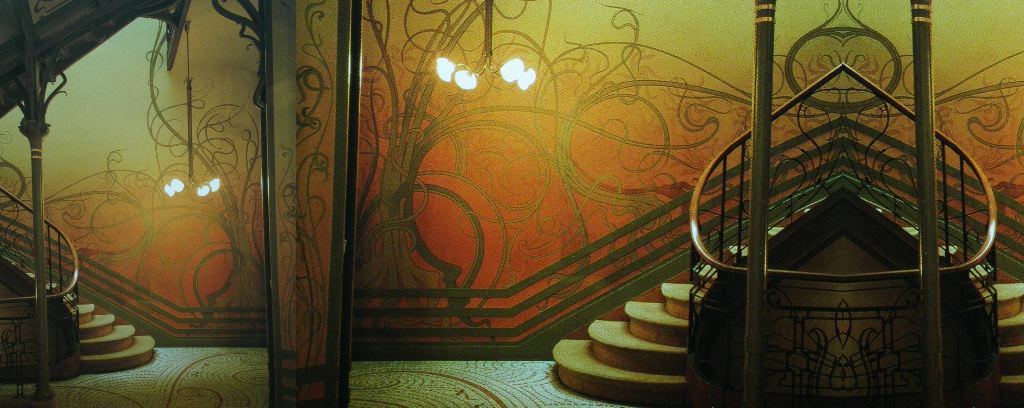 So, craftsmen’s work not factory; not always!
Vases and bedside lamps of Emile Gallé were so popular, he sold them so much that he made them in the assembly line of a factory so that everyone can buy some; but it is an exception. Manufactured in the assembly line these objects became less beautiful; when complicated things are made too quickly, they can look less accomplished.
So, craftsmen’s work not factory; not always!
Vases and bedside lamps of Emile Gallé were so popular, he sold them so much that he made them in the assembly line of a factory so that everyone can buy some; but it is an exception. Manufactured in the assembly line these objects became less beautiful; when complicated things are made too quickly, they can look less accomplished.
 He sold them so much, that one decade later, everyone was disgusted, even more nobody want any, they put them in the attic. It had become a sign of bad taste for everyone.
And now, there are people who like them again, the lamps.
They are very beautiful lamps when they are genuine lamps of this time. The problem it is that there is not much left, therefore the stores sell some brand new one, they are even less authentic, and that will soon disgust everyone again.
It is the infernal circle of the lamps Art nouveau and the snake that bites its tail.
He sold them so much, that one decade later, everyone was disgusted, even more nobody want any, they put them in the attic. It had become a sign of bad taste for everyone.
And now, there are people who like them again, the lamps.
They are very beautiful lamps when they are genuine lamps of this time. The problem it is that there is not much left, therefore the stores sell some brand new one, they are even less authentic, and that will soon disgust everyone again.
It is the infernal circle of the lamps Art nouveau and the snake that bites its tail.
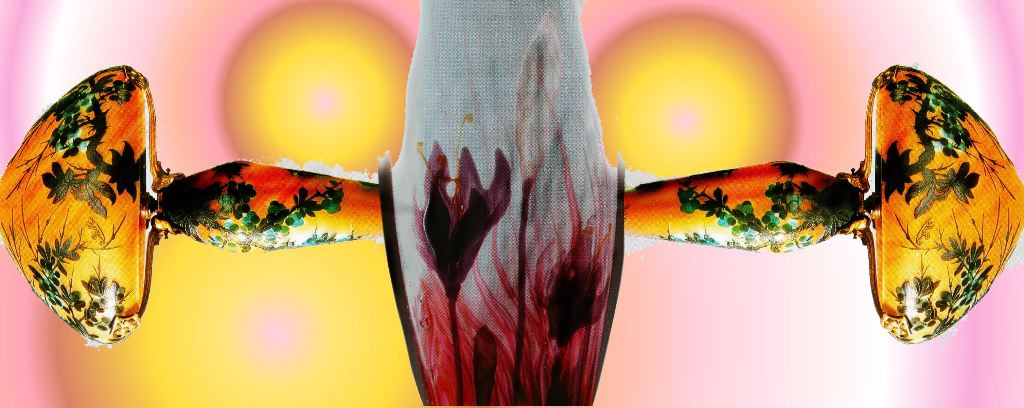 Have a drink at the Excelsior!
Have a drink at the Excelsior!
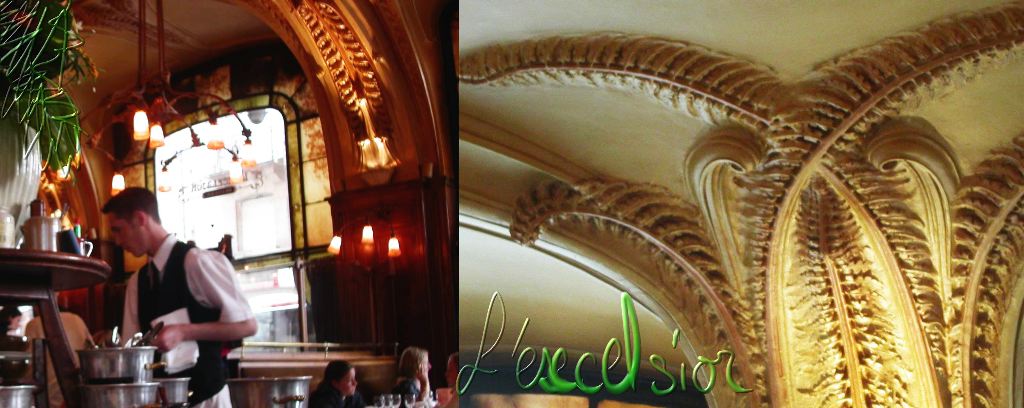


0 Comments:
Post a Comment
<< Home